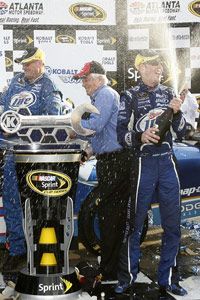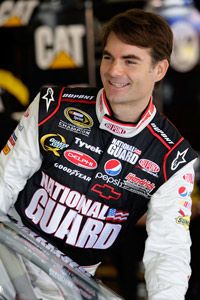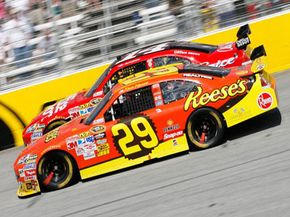The baritone rumble of monster V-8s permeate the air and rattle your ribcage. The stink of gasoline and scorched rubber fill your nostrils, but you find their aroma sweet rather than offensive. Only slightly less tangible is the omnipresent thrill of danger from vehicles hurtling by at speeds nearing 200 miles per hour (322 kilometers per hour) within an enclosed space.
Advertisement
If you've ever ventured near the big oval during a NASCAR race, you know the excitement produced by a speeding pack of 800-horsepower stock cars. Perhaps you've even imagined what it would be like to drive one of these mighty metal beasts for a living. We can't really blame you. After all, the potential rewards of being a professional race car driver exceed what most people could ever imagine at a normal desk job: Adoring fans, driving like a maniac -- and an annual salary that could reach into the millions of dollars.
You should know from the outset is that becoming a NASCAR driver is an intensely rigorous and competitive process. You have to be in top physical shape to be able to withstand the punishing conditions of racing hundreds of miles. You have to be smart, too: Major sponsors are increasingly favoring better-educated, well-spoken drivers who can represent their products in the most positive light possible.
Before NASCAR, stock car racing was a disorganized competitive outlet for illegal whiskey traffickers in the South -- guys who had honed their driving skills by evading law enforcement and tax collectors. Early tracks were made of dirt and chaos ruled, and that inconsistency caused problems. Fans never knew when and where their favorite drivers would appear to compete. There were very few rules to make sure the cars were equal in power and capability -- races often became snoozefests if one driver could trounce the field with a superior car [source: Hagstrom]. If those problems weren't enough, the league's lack of organization often allowed unscrupulous race promoters to disappear with the drivers' winnings.
This changed in 1948, after William H.G. "Big Bill" France called a meeting of southern track owners in Daytona Beach, Fla. They agreed to band together and form the National Association of Stock Car Auto Racing, now known as NASCAR.


